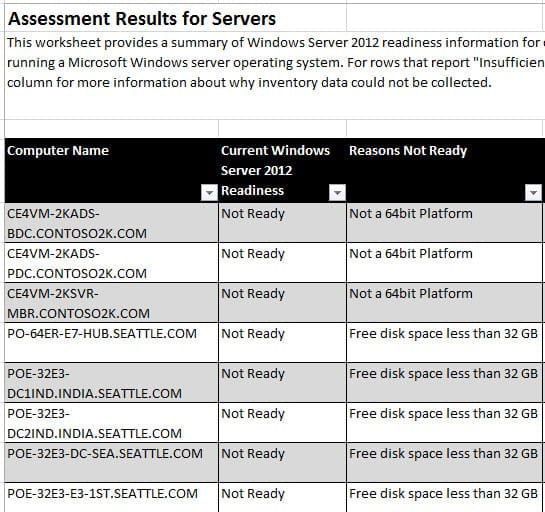Plan a Windows Server 2012 Migration with MAP 8.0
Why would I use MAP 8.0 to migrate to Windows Server 2012?
There are many reasons why you might want to migrate your existing servers to Windows Server 2012, such as improved virtualization and cloud-management capabilities, but the job can be complicated, especially in environments where there are hundreds of servers running complex workloads on different hardware configurations.
Microsoft’s Assessment and Planning Toolkit (MAP) version 8.0 is available as a free download and can help organizations evaluate their current environment and plan a migration project to Windows Server 2012 or virtualize workloads on Hyper-V.
MAP is agentless, meaning you don’t need to install any software on servers or clients to perform an inventory. Once MAP has collected data about your systems, it can generate reports to identify the hardware Windows is running on, the roles and features installed on servers, and other important details that might impact a migration. MAP can be installed on a single server and collects inventory data in a database.
Migrating to Windows Server 2012
When planning a migration to Windows Server 2012, especially if you plan to use existing physical hardware, it’s important to ensure that the minimum hardware requirements for Windows Server 2012 will be met. For example, Windows Server 2012 can only be installed on devices with a 64bit architecture.
MAP collects the necessary information and reports can be generated so you can get an overview of what hardware will run Windows Server 2012. Additionally, the Windows Server 2008R2 role assessment report lists all the roles installed across servers in your organization.
Reports and proposals
While MAP reports are useful for technical staff, MAP can also generate proposal documents, summarizing the technical details of reports in a format that management can understand, including graphs. The documents can be used as the basis of a proposal to get backing for a migration project.
Virtualize physical workloads
MAP can be used to determine which server workloads would be best suited to virtualization. Not only that, but MAP can also help plan for desktop virtualization, using Hyper-V as the basis for a Virtual Desktop Infrastructure (VDI). The installed products view in the MAP 8.0 GUI shows all the software running across your environment, which is essential in understanding which desktop workloads can be virtualized, as not all software is suited to running on a virtual machine, especially applications with substantial graphics requirements. MAP inventories can be scheduled to run at different times, so notebooks that remotely connect at odd times to the corporate intranet will be included.
The server usage summary report is useful for capacity planning, which is particularly important when virtualizing physical server workloads. The report gives administrators a good idea of the workload of each server, and it aids planning for the potential resources required for virtualization. With official support for virtualized domain controllers (DCs) and significant improvements in Hyper-V performance, Windows Server 2012 is likely to accelerate further the move towards virtualization.




